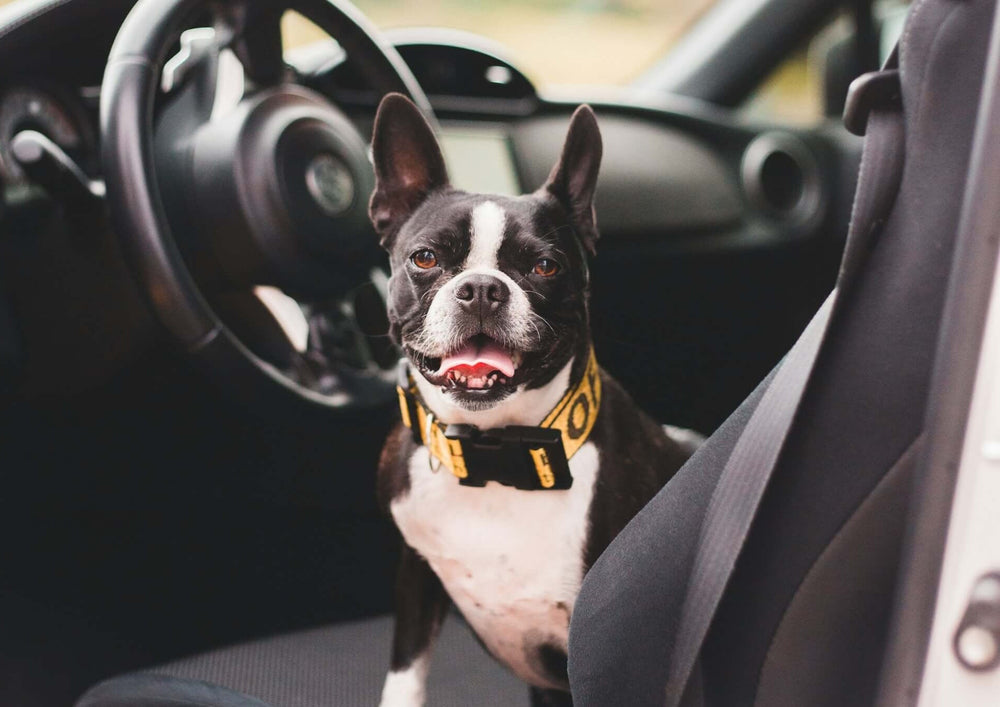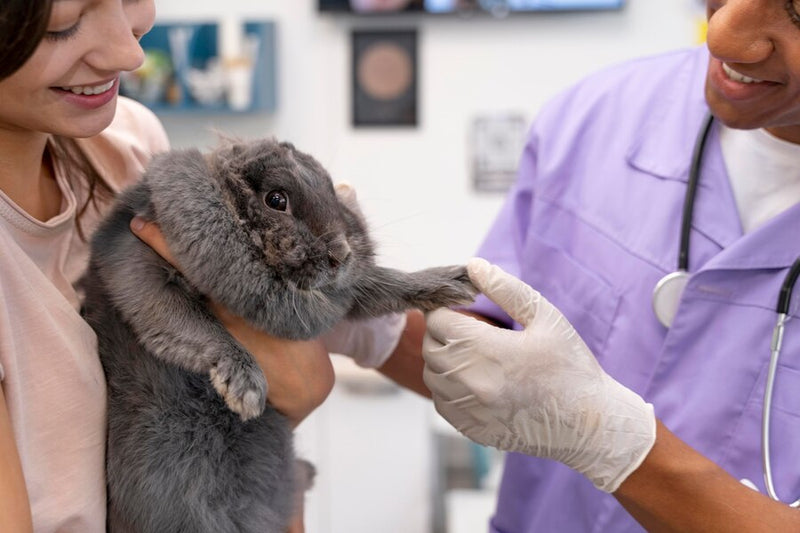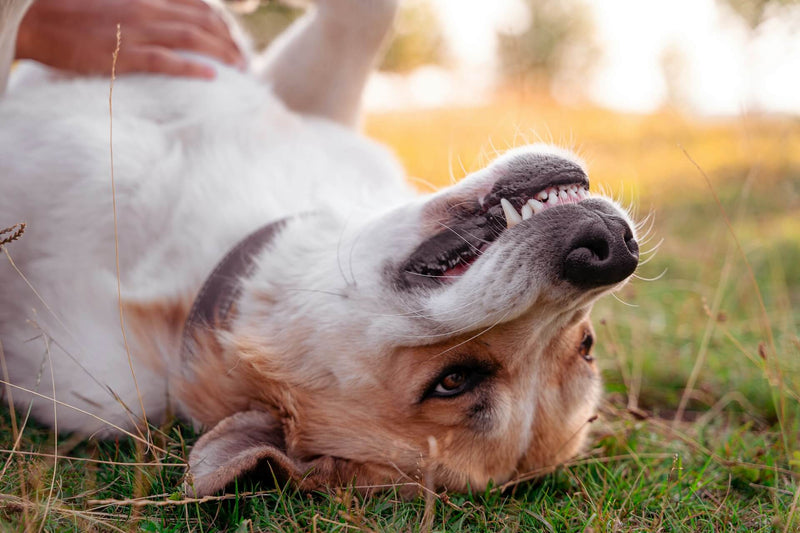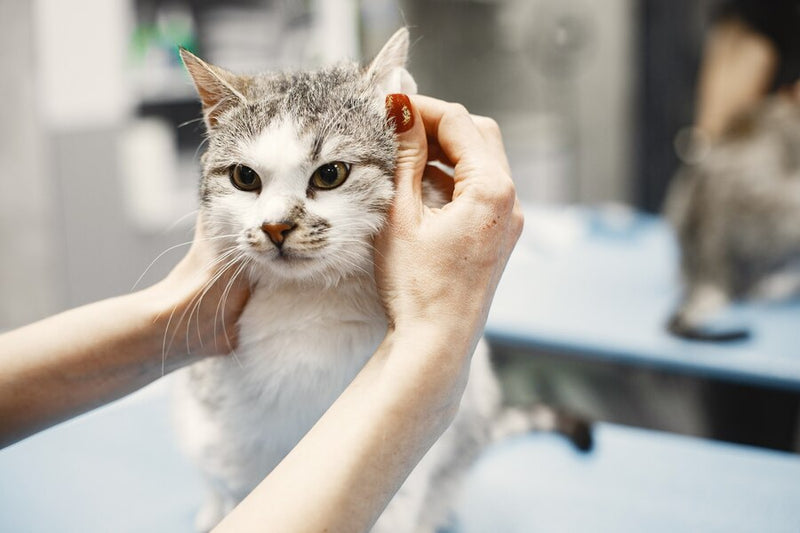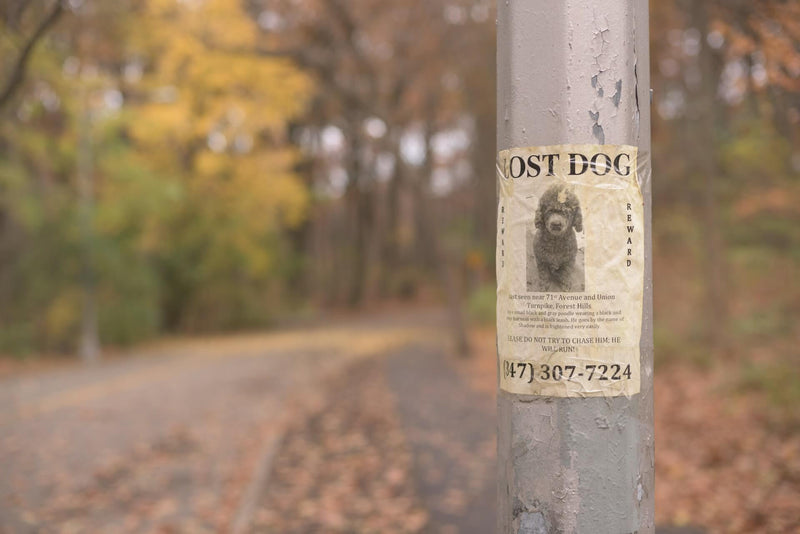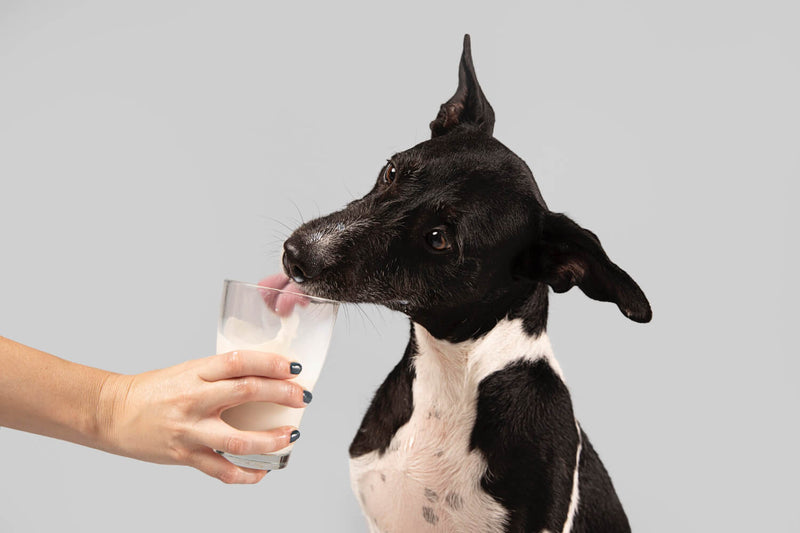
Welcome to Gritty Pet Co.
Your Canadian, specialty Pet Health & Wellness destination. 🇨🇦

Vet Reviewed & Approved
Dr. Ibrar A. is our veterinarian and a key member of our team. ✅
Dog car safety is essential to ensuring your pet's well-being during travel. While traveling with your pup can be a joyous experience, it also comes with responsibilities. Just as we prioritize seat belts and child car seats, protecting our dogs during car rides is equally important. Here's a complete guide on dog car safety and how to ensure a smooth and secure journey for both you and your furry companion.
Key Takeaways
Prioritize Proper Restraints: Always use a dog seat belt or crash-tested crate. In an accident, unrestrained dogs become dangerous projectiles. A simple investment in proper restraints could be lifesaving, reducing injury risks by up to 80%.
Stay Cool and Calm: Never leave your dog unattended in a parked car. Temperatures can rise rapidly, even on mild days, leading to heatstroke. Always keep the car ventilated, and take frequent breaks to let your dog stretch and hydrate.
Plan for Emergencies: Accidents happen, so be prepared with a pet first-aid kit and emergency contacts. Knowing how to handle unexpected situations ensures your dog’s well-being and gives you peace of mind on every trip.
Beyond the Basics: there are advanced steps you can take to ensure your dog's comfort and safety during car travel.
Customize for Comfort: Tailor your car to your dog’s needs with pet barriers, ramps, or temperature controls. For example, older dogs benefit from ramps to avoid injury, while anxious breeds might need cooling mats or calming pheromones to reduce stress.
Address Behavioural Challenges: Use gradual exposure and positive reinforcement to help dogs overcome travel anxiety. Start with short trips and reward calm behavior to build positive associations. This training approach can transform stressful journeys into peaceful rides.

Dog Car Safety Vehicle Modification
When it comes to traveling with dogs, your vehicle can play a significant role in ensuring their safety and comfort. Consider these modifications to make your car more dog-friendly:
Pet Barriers : Install pet barriers or crates to confine your dog to a specific area of the car, preventing them from wandering around and potentially causing distractions or injuries.
Safety Harnesses and Seat Belts : Invest in a quality dog safety harness or seat belt system designed to secure your pet in place during car rides, similar to how you would buckle up yourself and your human passengers.
Ramp or Steps : For larger or older dogs, a ramp or steps can make it easier for them to get in and out of the vehicle, reducing the risk of injuries from jumping or straining.
Window Guards : Consider installing window guards to prevent your dog from accidentally rolling down windows or sticking their head out, which can pose a safety hazard.
Long Trip Safety Tips
Making sure your dog is safe and happy on long car rides is important. Here are some simple tips:
Hydration is Key : Just like humans, dogs need to stay hydrated, especially during extended periods of travel. Make sure to bring along plenty of fresh water and a portable water bowl for your dog to drink from. Offer water at regular intervals, particularly during rest stops, to prevent dehydration.
Take Regular Breaks : Long car rides can be tiring for dogs, so it's crucial to schedule regular breaks to allow them to stretch their legs, relieve themselves, and get some exercise. Plan to stop every few hours at dog-friendly rest areas or parks where your pup can roam around and burn off some energy.
Plan Bathroom Breaks : Along with regular exercise breaks, make sure to provide ample opportunities for your dog to relieve themselves. Keep an eye out for designated pet relief areas at rest stops or plan to make pit stops in pet-friendly towns along your route.
Comfortable Resting Area : Create a cozy and comfortable resting area for your dog inside the car, whether it's a soft blanket, a cushioned bed, or a travel crate lined with familiar bedding. This will help your pup relax and feel secure during the journey.
Manage Motion Sickness : Some dogs may experience motion sickness during car rides, leading to discomfort and anxiety. To help alleviate motion sickness symptoms, feed your dog a light meal a few hours before the trip and avoid feeding them immediately before or during the journey. Additionally, consider using products such as anti-nausea medication or calming supplements recommended by your veterinarian.
Temperature Control : Be mindful of the temperature inside the car, especially during hot weather. Avoid leaving your dog alone in a parked car, as temperatures can quickly rise to dangerous levels, leading to heatstroke or dehydration. Keep the car well-ventilated and consider using sunshades or window shades to block out direct sunlight.
Emergency Preparedness
Emergencies can happen when we least expect them, even during a routine car trip with our beloved pets. While it's not something anyone wants to dwell on, being prepared can make all the difference in ensuring the safety and well-being of our furry companions. Here's how you can ensure you're ready to handle any unexpected situations that may arise:
Pet First-Aid Kit : Assemble a pet-specific first-aid kit containing essentials such as bandages, antiseptic wipes, tweezers, and any necessary medications prescribed by your veterinarian.
Emergency Contact Information : Keep a list of emergency contact numbers, including your veterinarian's contact details and the nearest animal emergency clinic, readily accessible in your car.
Practice Emergency Procedures : Familiarize yourself with basic pet first-aid techniques and emergency procedures, such as CPR for dogs, so you can act swiftly and confidently in case of an emergency.
In addition to a first-aid kit, pack essentials such as food, water, a leash, and your pet's medical records. These items will come in handy during an emergency or unexpected delay.
In an emergency, it's essential to stay calm and focused. Assess the situation carefully and take decisive action to ensure the safety and well-being of your pet. Remember that your calm demeanor can help reassure your pet and facilitate a smoother resolution to the emergency.

Behavioral Training Techniques
Proper behavioral training can make a world of difference in ensuring a calm and stress-free car ride for both you and your dog. Here are some effective training strategies:
Gradual Exposure : Introduce your dog to car rides gradually, starting with short trips around the block and gradually increasing the duration as they become more comfortable.
Positive Reinforcement : Use treats, toys, and praise to reward calm and relaxed behavior in the car, helping to create positive associations with car rides.
Desensitization : Gradually expose your dog to car-related stimuli, such as the sound of the engine starting or the sensation of movement, to help desensitize them to potential stress triggers.
Crate Training : If using a crate or carrier, acclimate your dog to it at home first before introducing it in the car, making it a comfortable and familiar space for them.
Preventing Distractions
Distracted driving is dangerous for everyone on the road, including our pets. Here's how you can minimize distractions caused by your dog:
Secure Restraints : Always secure your dog with a harness or seat belt attachment to prevent them from moving around excessively or climbing into the driver's area.
Avoid Loose Objects : Keep loose objects such as toys, food bowls, or leashes stowed away to prevent them from becoming projectiles in the event of sudden stops or accidents.
Avoid Unnecessary Stops : Minimize unnecessary stops or sudden movements that could startle or excite your dog, leading to potential distractions.
Prioritizing dog car safety is important for ensuring the well-being of your beloved furry companions during travel. With these simple steps, you can create a secure and comfortable environment for our dogs on the road.
FAQ
1. Why is it important to match harnesses to my dog's size and breed?
Matching harnesses to your dog's size and breed ensures a secure and comfortable fit, reducing the risk of injury during car rides. Different breeds have unique body shapes and sizes, so using a harness designed for their specific needs enhances safety.
2. How do I know which modifications are necessary to accommodate my car and dog's needs?
Assess your car's specifications and your dog's size and behavior to determine the appropriate modifications. For example, if you have a small car and a large dog, you may need to install a pet barrier or use a harness attachment to ensure your dog stays safely in place during travel.
3. What should I pack for long road trips with my dog?
For long trips, pack essentials like fresh water, a portable bowl, your dog’s favorite snacks, and a comfortable resting area. Don’t forget a pet first-aid kit and your dog’s medical records in case of emergencies. Planning ahead ensures a smooth and enjoyable trip for both you and your pet.
4. Why is it crucial to use a dog seat belt or harness during car rides?
Using a dog seat belt or harness prevents your pet from roaming inside the vehicle, which can lead to distractions or injury during sudden stops. Just like human seat belts, these restraints are designed to keep your dog safe and secure, minimizing the risk of serious harm during accidents.
5. How can I help my dog with car anxiety?
To ease car anxiety, gradually acclimate your dog to the car with short, positive trips, and reward calm behavior. Use familiar items like a favorite blanket or toy, and consider natural calming aids or consulting your vet for advice. Your dog’s comfort is key to a stress-free journey.
Top YouTube Videos on Dog Car Safety
1. Car Safety for Pets | Traveling Safely with Big Dogs, Little Dogs & Cats
Why Watch: It covers essential tips on using harnesses, crates, and other restraints to keep dogs and cats secure, whether you're heading on a long road trip or a quick drive to the vet.
2. Car Safety Gear for Dogs
Why Watch : Perfect for pet enthusiasts who love to pamper their dogs, this video from The Pet Collective explores the latest trends and products in car safety gear.
Final Thoughts
Ensuring your dog’s safety on the road is more than just a responsibility—it’s an act of love. By implementing the tips and techniques outlined in this guide, you’re not only protecting your pet but also creating a more enjoyable travel experience for both of you. Safe travels and happy tails!

